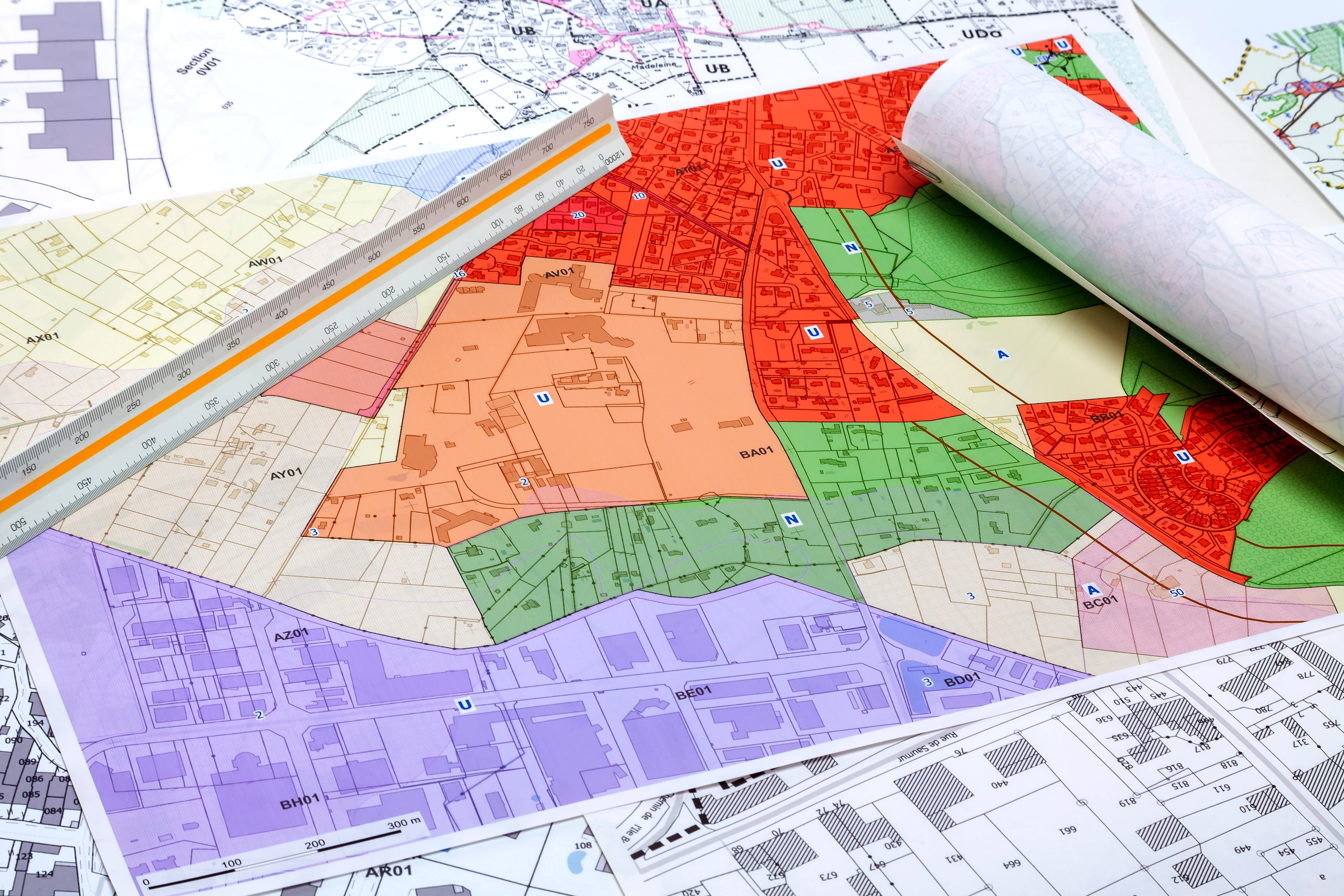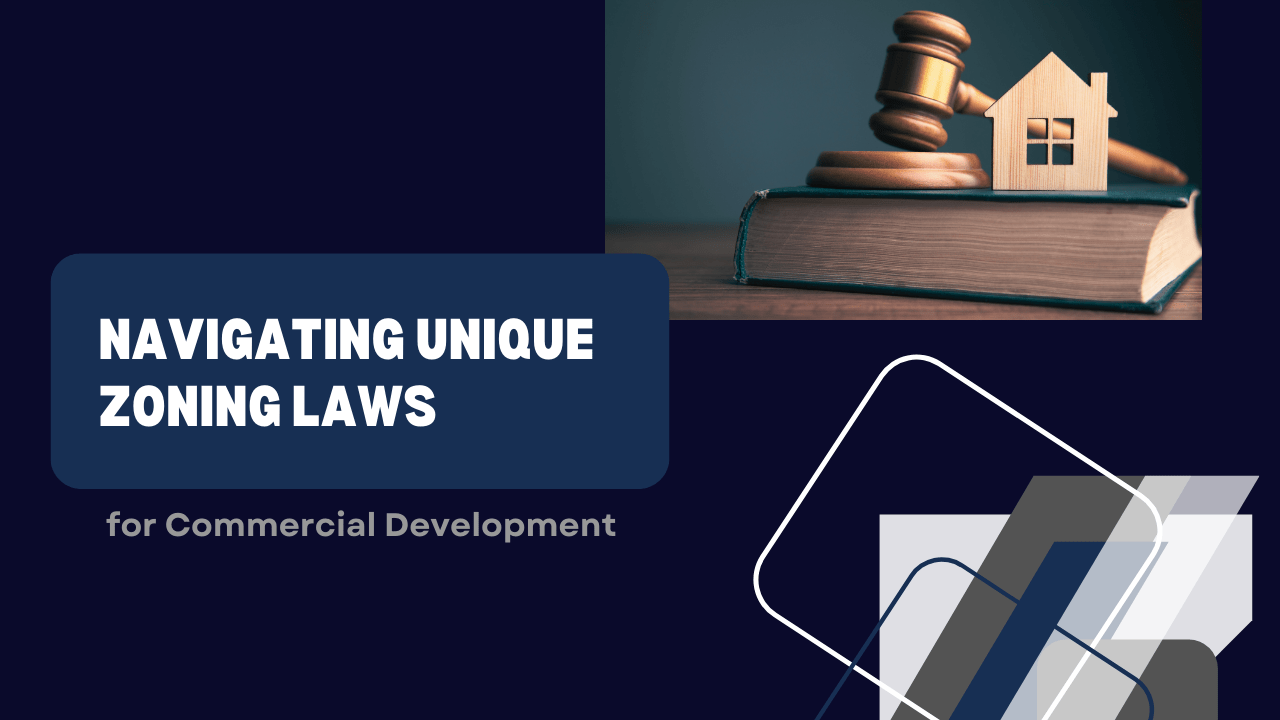For commercial developers and real estate investors, Los Angeles presents a number of potentially profitable opportunities. There’s always a need for more space and not a lot of land to support that need. This requires creativity and a keen understanding of the local zoning laws and how they might impact what sorts of commercial activities are permitted in different neighborhoods and regions of the city.
Please contact us at Bell Properties Commercial Real Estate if there are any questions about zoning ahead of an investment. It’s never good to learn about laws and restrictions after the fact.
Navigating the maze of Los Angeles zoning laws can be a formidable challenge, even for the most experienced and knowledgeable investor. It’s why our expertise is so valuable. With the city’s distinct neighborhoods, each with its own unique set of requirements and regulations, understanding these laws is crucial for any successful development project.
Let’s break down the zoning categories and talk about what they mean for commercial real estate investors in Los Angeles.
California Commercial Real Estate: Zoning Laws and Categories in Los Angeles

Zoning laws are part of commercial property laws. They govern how land can be used in specific areas of a city. They’re important for many reasons, including:
Planning. Zoning laws help cities plan for land use in a transparent and organized way, preserving residential areas for homes, for example, and commercial zones for business activity.
Economic and social benefits. Zoning laws can improve health and wellness, and benefit communities economically and socially.
Environmental conservation. Zoning laws can help protect the environment, ensuring that people live and work in areas that are safe and healthy.
Preventing incompatible uses. Zoning laws prevent incompatible uses, such as a residential home next to a large, industrial factory.
Zoning laws in Los Angeles are by the Department of City Planning. They oversee these laws and regularly update them to align with the city’s evolving needs.
Los Angeles zoning codes are typically divided into several categories:
Residential (R). This zoning category covers housing ranging from single-family homes to large apartment complexes.
Commercial (C). This category applies to areas designated for business activities like retail spaces or shopping malls, office buildings, or hospitality businesses such as hotels.
Industrial (M). An Industrial category would pertain to manufacturing and warehousing operations.
Mixed-Use. The mixed-use designation allows for residential and commercial activities in the same area. Think of a condo with a grocery store on the bottom level. Or, an apartment building with offices on the top floor. Mixed-use zones in Los Angeles include: C2/R3 (Commercial/Residential) and C4/1VL (Commercial Office/One-Family Limited).
There are other, less common zoning designations in Los Angeles commercial spaces. For example, there might be an area zoned for Public Facilities (PF). This region would be reserved for schools, government buildings, and utilities.
Each category is further broken down into subcategories that specify density, building height, parking requirements, and more. For example, a “C2” zone might permit a wider array of commercial activities than a “C1” zone.
Not sure which zone would pertain to which project? Contact us at Bell Properties Commercial Real Estate, and we can deliver a customized answer. Generally speaking, this is how the commercial zones break down:
C1 - Limited Commercial Zone
Properties in this zone are generally small scale business operations and might include retail stores, personal services, and offices. It's an ideal option for investors looking for properties in neighborhood shopping districts.
C2 - Commercial Zone
This zone accommodates larger retail establishments, restaurants, and entertainment venues. This zoning designation is more flexible, making it attractive for investors interested in mixed-use developments that combine commercial and residential spaces.
C4 - Commercial Zone
Also known as a Central Commercial Zone, this designation permits more intense commercial developments. Properties zoned C4 can include hotels, clubs, theaters, and large department stores. These areas are usually bustling urban centers, offering substantial potential returns for investors willing to invest in busier environments.
C5 - Commercial Zone
C5 zones are primarily used for automotive-related businesses. Think car dealerships, repair shops, and gas stations. While this zoning designation is less common, it can be lucrative for investors targeting the automotive industry.
CM - Commercial Manufacturing Zone
CM zoning blends commercial and manufacturing uses, allowing for a mix of offices, retail, and light industrial activities. This versatile zoning is perfect for industries requiring a combination of office space and on-site production or warehousing, offering investors diverse business opportunities.
CR - Limited Commercial Recreation Zone
CR zoning is intended for recreational activities and services. Properties in this zone might include golf courses, parks, and sports facilities. Investors eyeing opportunities in leisure and recreation will find CR zones particularly appealing.
Mixed-Use Zoning in Los Angeles
 There’s a growing demand for mixed-use zoning, especially among commercial developers in Los Angeles. These areas can create a convenient environment for business and residential use, keeping each activity separate from one another but also convenient. This increases the city’s affordable housing supply, keeps residents closer to conveniences like grocery stores, shops, and even work. There’s also more of a pedestrian-friendly atmosphere in mixed-use developments, which helps investors attract commercial tenants to these spaces.
There’s a growing demand for mixed-use zoning, especially among commercial developers in Los Angeles. These areas can create a convenient environment for business and residential use, keeping each activity separate from one another but also convenient. This increases the city’s affordable housing supply, keeps residents closer to conveniences like grocery stores, shops, and even work. There’s also more of a pedestrian-friendly atmosphere in mixed-use developments, which helps investors attract commercial tenants to these spaces.
Specific Plans and Their Impact on LA Neighborhoods
 In Los Angeles, a Specific Plan (SP) is a planning document that establishes development standards and regulations for a specific geographic area. The SP provides a long-term vision for the city’s growth and sustainability. SPs are a hybrid of planning and implementation that can provide certainty for developers and the public.
In Los Angeles, a Specific Plan (SP) is a planning document that establishes development standards and regulations for a specific geographic area. The SP provides a long-term vision for the city’s growth and sustainability. SPs are a hybrid of planning and implementation that can provide certainty for developers and the public.
Specific Plans can:
Match Growth Goals to Local Needs
Each neighborhood in Los Angeles is unique, and SPs allow urban planners to customize growth to the specific needs and characteristics of each neighborhood. For example, a specific plan in a historic district might focus on preserving architectural integrity, while a plan in a transit-oriented district could prioritize mixed-use developments to reduce reliance on cars.
Promote Economic Development
Specific plans can also serve as catalysts for economic growth by attracting investment and development to underutilized areas. By providing clear guidance and incentives, these plans can help create vibrant commercial corridors and job centers in high-need neighborhoods.
Improving Quality of Life
SPs play a crucial role in enhancing quality of life in LA’s neighborhoods. By focusing on elements like open spaces, parks, public art, and community facilities, specific plans can help create neighborhoods that are not only functional but also enjoyable places to live.
Overview of Overlay Zones
Overlay zones are additional zoning controls that apply to a particular area on top of the existing base zoning regulations. These zones are used by local governments to address specific needs or goals for a community, such as enhancing public transportation access, encouraging the reuse of existing structures, or preserving historical areas.
Historical Preservation Overlay Zones aim to protect areas with significant historical, cultural, or architectural value. Development in these zones often requires adherence to strict guidelines to ensure that new projects and renovations maintain the historical integrity of the area. This can be both a challenge and an opportunity for developers interested in contributing to the preservation of a city's heritage.
Adaptive Reuse Districts encourage the transformation of underutilized buildings into new and innovative uses. This type of overlay zone is particularly relevant in urban areas where space is limited and preserving existing structures is more sustainable than new construction. Developers in these zones can leverage existing architecture while meeting modern needs, often benefitting from incentives such as tax credits or reduced regulatory hurdles.
Transit-Oriented Districts are designed to maximize access to public transportation, encouraging mixed-use development that reduces reliance on automobiles. These zones typically feature higher density residential and commercial projects that capitalize on their proximity to transit hubs. For developers, TODs represent an opportunity to create vibrant, walkable communities that attract residents and businesses seeking connectivity and convenience.
Developing in overlay zones can offer several advantages, including the potential for increased property value due to enhanced amenities and desirability. Interested in investing in an area zoned for such? Contact us at Bell Properties Commercial Real Estate.
Preparing for Zoning Requirements as a Commercial Real Estate Investor in Los Angeles
Investing in areas zoned for a variety of things offers a lot of opportunity. Special requirements are in place for commercial developers, such as traffic impact studies and environmental assessments. These things need to be part of any investment strategy and timeline. There may be public hearings required, or a period where community input is considered during the approval process.
The best way to prepare for success when approaching different zoning requirements in the Los Angeles commercial real estate market is to create a network of professionals who can ensure that mistakes are avoided and legal knowledge is leveraged. At Bell Properties Commercial Real Estate, we have worked with Conditional Use Permits (CUPs) and zoning adjustments. We’ve consulted with adaptive reuse and redevelopment in commercial zones. We’ve helped investors manage their environmental inspections and sustainability studies.
Don’t risk a mistake with zoning laws. We can help with any California commercial real estate developments, acquisitions, and investments. Contact our team at Bell Properties Commercial Real Estate.




